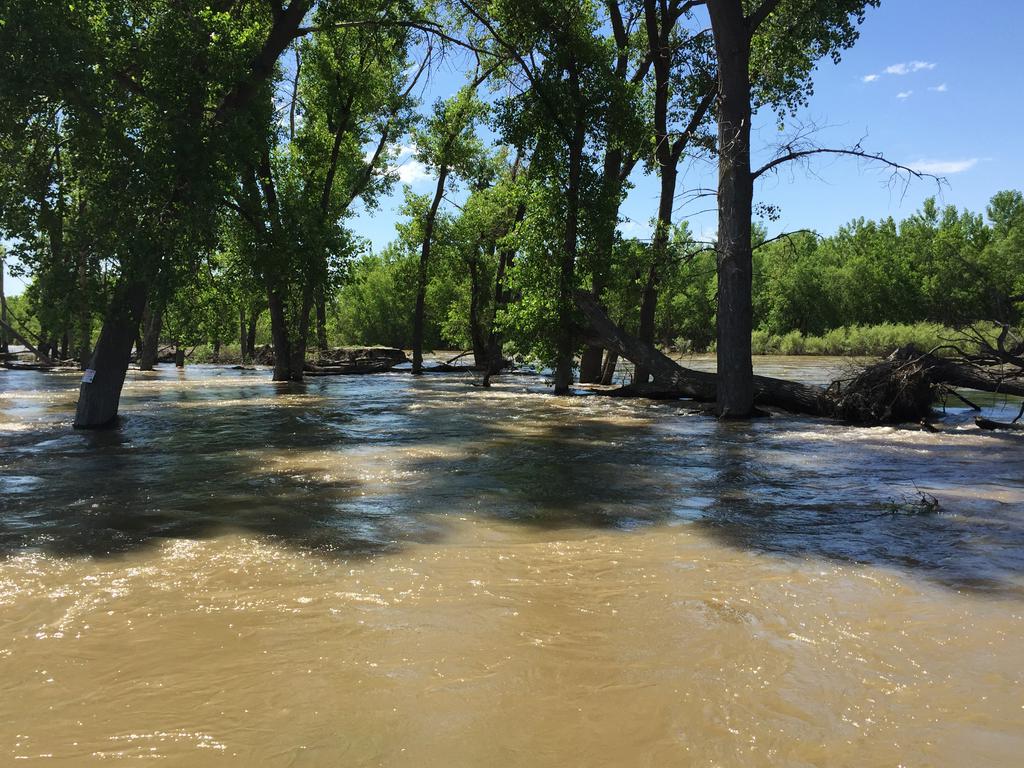By Mark Leberfinger, AccuWeather.com Staff Writer
June 25,2015; 7:28PM,EDT
Having an emergency exit plan isn't just a good idea for fires, but it's also vital for flooding and other weather emergencies.
Flash flooding has been a huge problem this spring and summer in the United States as over a foot of rain fell in parts of Oklahoma and Texas.
There are more flood-related deaths each year in the U.S. than for any other weather condition, the National Weather Service (NWS) said.
Depending on the location of your home and the severity of flood, it can take anywhere from minutes to hours for flood waters to inundate the ground floor of your house, AccuWeather Meteorologist Brian Lada said.
"In the worst-case scenario, flood waters from a faraway storm can quickly flow downstream, causing water levels to rise several feet in a matter of 15 or 30 minutes," Lada said. "In a more common, less extreme situation, water levels will rise at a more gradual pace, taking several hours for floodwaters to put your house in danger."
RELATED:
Places You're Most Likely to Be Struck by Lightning in the US
Lightning Safety Week 2015: Nine Fatal Strikes so Far This Year
Men Versus Women: Whom Does Lightning Strike More Often?
One of the most important things that people should do is keep updated on the latest flood watches and flood warnings, Lada said.
"Watches and warnings can tell you when you can expect flooding, giving you time to prepare. If you wait until the last minute, the floodwaters may make it difficult or impossible to reach a safe area away from the flood waters," Lada said.
High ground away from rivers, lakes and other bodies of water is the ideal location for avoiding flood waters, Lada said.
Developing a Flood Escape Plan
Developing a Flood Escape Plan

Know your home’s vulnerability to storm surge, flooding and wind.
Locate a safe room or the safest areas in your home for each hazard.
Determine escape routes from your home and places to meet.
Make a plan now for what to do with your pets should you need to evacuate.
Post emergency numbers by your phones and make sure your children know how and when to call 911.
Stock non-perishable emergency supplies and a Disaster Supply Kit.
In this photo provided by the Washington County
Emergency
Management, flooding from the South Platte River covers an area near
Messex, Colorado, Thursday, June 18, 2015. (Photo/Michael
McCaleb/Washington
County Emergency Management via AP)
"If you go to higher ground but it's near the body of water that is flooding, you may find yourself on dry land, but surrounded by water as the flood waters rise," he said.
"If you do find yourself in your house surrounded by floodwaters, you should go to the second story of your house with food, water and other supplies. If your home only has one story, relocating to your roof may be your only option for staying dry until you can be rescued."
 Port
Lavaca Mayor Jack Whitlow surveys damage to a park pier as Tropical
Storm Bill passes over, Tuesday, June 16, 2015, in Port Lavaca, Texas.
(AP Photo/Eric Gay)
Port
Lavaca Mayor Jack Whitlow surveys damage to a park pier as Tropical
Storm Bill passes over, Tuesday, June 16, 2015, in Port Lavaca, Texas.
(AP Photo/Eric Gay)A majority of flood deaths are vehicle-related with motorists trying to drive through flood waters, AccuWeather Meteorologist Evan Duffey said.
"Most people know they can get to the roof or attic if floodwaters overrun a home but driving through floodwaters is the big problem," Duffey said.
Flood situations can be very difficult for firefighters who may not have boats and other specialized equipment for water rescues, said Duffey, who is also a Pennsylvania volunteer firefighter.
"If there are a lot of rescues going on, the companies with specialized equipment will be using their resources and may be overwhelmed," Duffey said. "Other companies assisting may only have rope and life preservers."

No comments:
Post a Comment